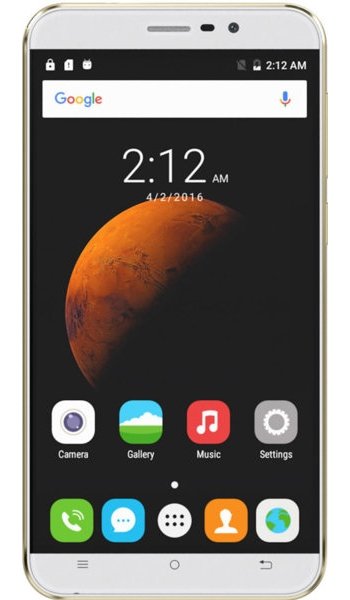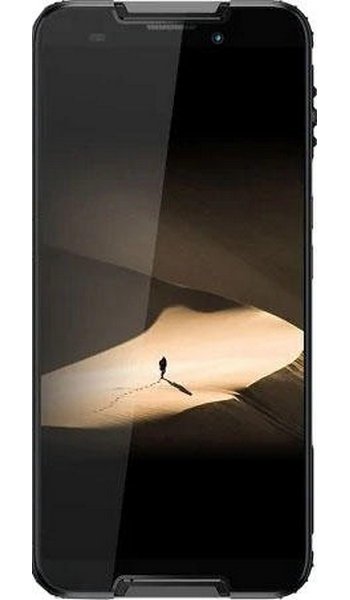Cubot Dinosaur vs Cubot Quest Comparison and Differences
Smartphone 1

Cubot Dinosaur
Smartphone 2

Cubot Quest
Smartphone 3
Cubot Dinosaur or Cubot Quest Specs Comparison
or
 Common specs
Common specs
| Brand and model | Cubot Dinosaur | Cubot Quest | |
| Rating | (+0) | (+0) | |
| Release date | March, 2016 | May, 2019 | |
| Dimensions (HxWxD) | 152.3 x 77.2 x 8.8 mm | 6 x 6 x 3.04 in | 157 x 73.7 x 8.8 mm | 6.18 x 6.18 x 2.9 in | |
| Weight | 183 g | 6.46 oz | 216 g | 7.62 oz | |
| Body Build | Plastic | Rugged Smartphone, Polycarbonate | |
| Case | buy from Amazon | buy from Amazon | |
| Colors | Black, White, Gold | Black, RedRed/Black, Black | |
| Battery | 4150 mAh, Li-Ion, Removable | 4000 mAh, Li-Ion, non-removable | |
| Approximate price | |||
| Check price | from Amazon | from Amazon |
 Screen
Screen
| Technology | LCD IPS | IPS LCD | |
| Touchscreen | capacitive touchscreen | capacitive touchscreen | |
| Display colors | 16M | 16M | |
| Screen size | 5.5" in | 5.5" in | |
| Screen area | 78.1 cm2 | ||
| Screen format | 16:9 (height:width) | 18:9 (height:width) | |
| Screen to body ratio | 71% | 67.5% | |
| Screen resolution | 720 x 1280 px | 720 x 1440 px | |
| Screen PPI /points per inch/ | 267 PPI | 293 PPI | |
| Screen protection | Scratch resistant | Corning Gorilla Glass 5 | |
| Other specs | - 450 nits (typ) | - 450 nits (typ) | |
| Screen protector | buy from Amazon | buy from Amazon |
 Camera and Video
Camera and Video
| Rear camera, main | 8 MP, Single | 12 MP, Dual | |
| Camera specs | -8 MP, ƒ/ 2.0, (wide), 1.13 µm | -12 MP, f/1.8, (wide), 1/2.9'', PDAF -2 MP |
|
| Functions | LED flash | Dual-LED flash | |
| Video | 1080p video | Yes | |
| Front camera, selfie | 2 MP, Single | 8 MP, Single | |
| Specifications | 2 MP, ƒ/ | 8 MP | |
| Video | Yes |
 Performance
Performance
| Operating system - OS | Android 6.0 Marshmallow | Android 9.0 P | |
| Chipset | - MediaTek MT6735A (28 nm) | - Mediatek MT6762 Helio P22 (12 nm) | |
| CPU | - Quad-Core (4x Cortex A53 1.3 GHz) | - Octa-core (4x2.0 GHz Cortex-A53 & 4x1.5 GHz Cortex-A53) | |
| GPU | ARM Mali-T720 MP2 | PowerVR GE8320 | |
| External memory | microSDXC (uses shared SIM slot) | ||
| Internal memory | 3GB 16GB, 3GB · 16GB | 64GB 4GB RAM |
 Benchmark
Benchmark
 Communication and Connectivity
Communication and Connectivity
| SIM card | Dual SIM, dual stand-by (Micro SIM + Micro SIM) | Hybrid Dual SIM (Nano-SIM, dual stand-by) | |
| Network | 2G / 3G / 4G / | GSM / HSPA / LTE | |
| Bands | -2G - B2 (1900), B3 (1800), B5 (850), B8 (900) -3G - B1 (2100), B8 (900) -4G - B1 (2100), B3 (1800), B7 (2600), B20 (800) |
-2G - GSM 850 / 900 / 1800 / 1900 - SIM 1 & SIM 2 -3G - HSDPA 850 / 900 / 1700(AWS) / 1900 / 2100 -4G - 1, 2, 3, 4, 5, 7, 8, 12, 17, 20 |
|
| Speed | HSPA, LTE | ||
| GPRS | Yes | Yes | |
| Edge | Yes | Yes | |
| Wi-Fi | 802.11b, 802.11g, 802.11n,Wi-Fi Hotspot | Wi-Fi 802.11 a/b/g/n | |
| GPS | GPS, A-GPS | GPS | |
| NFC | No | Yes | |
| USB | Yes, USB On-The-Go (OTG) | USB Type-C | |
| Bluetooth | Bluetooth 4.0, A2DP | 4.2, A2DP | |
| Harmful irradiation |
SAR EU - 0.529 W/Kg (head), 0.584 W/Kg (body) |
 Music and Audio
Music and Audio
| Radio | Yes | ||
| Headphone jack | Yes |
 Other features
Other features
| Sensors | - Proximity, Accelerometer | - Fingerprint (rear-mounted), accelerometer, gyro, proximity, compass | |
| Other extras |
- IP68 dust/water resistant (up to 1.5m for 30 min) -Drop-proof |
Reviews and Opinions on Cubot Dinosaur and Cubot Quest
If you had to recommend one of these phones to a friend, which one would it be and why? Share your arguments using the Add Opinion button!
